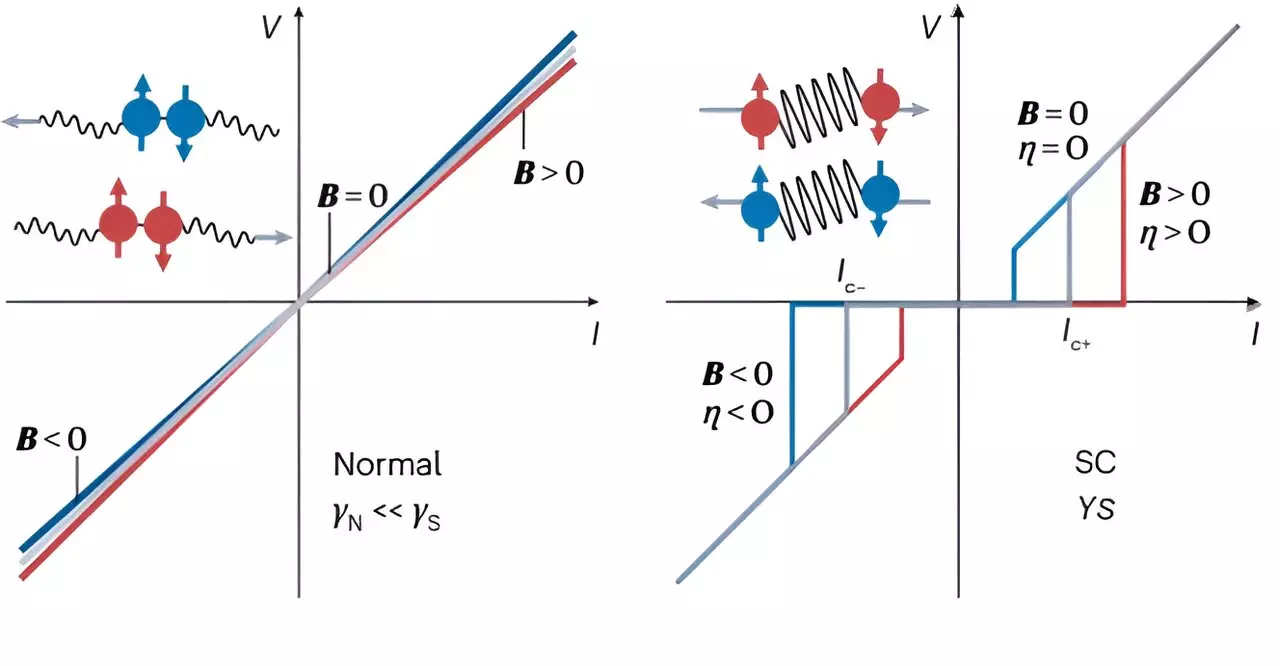In the realm of quantum condensed-matter physics, the superconducting diode effect has emerged as one of the most intriguing phenomena. Researchers from the University of Wollongong and Monash University, under the collaboration of FLEET (The Australian Research Council Centre of Excellence in Future Low-Energy Electronics Technologies), have conducted an in-depth review of this phenomenon. The superconducting diode effect allows for the dissipationless flow of supercurrent in a single direction, presenting innovative possibilities for superconducting circuits. This circuit element holds the key to the development of ultra-low energy superconducting and semiconducting-superconducting hybrid quantum devices, with potential applications in both classical and quantum computing.
Superconductors, characterized by zero resistivity and perfect diamagnetic behavior, offer dissipationless transport and magnetic levitation. The well-explained microscopic Bardeen-Cooper-Schrieffer (BCS) theory from 1957 provides a clear understanding of “conventional” low-temperature superconductivity in superconductors. However, the discovery of unconventional superconductivity has expanded the scope of this field. Functional materials such as magnetic superconductors, ferroelectric superconductors, and helical or chiral topological superconductors have opened up new avenues for research.
In recent years, researchers have made significant progress in observing nonreciprocal supercurrent transport, leading to the emergence of diode effects in various superconducting materials. These materials include single crystals, thin films, heterostructures, nanowires, and Josephson junctions. The FLEET research team has undertaken a comprehensive review of theoretical and experimental advancements in the superconducting diode effect (SDE), offering valuable insights into the materials, device structures, theoretical models, and symmetry requirements related to this phenomenon.
Unlike conventional semiconducting diodes, the efficiency of the superconducting diode effect is highly tunable through extrinsic stimuli and intrinsic quantum mechanical functionalities. Parameters such as temperature, magnetic field, gating, device design, Berry phase, band topology, and spin-orbit interaction can all influence the efficiency of the superconducting diode effect. Dr. Muhammad Nadeem, a Research Fellow at FLEET, explains that the direction of supercurrent can be controlled using either a magnetic field or a gate electric field. This gate-tunable diode functionality holds promise for novel applications in the realm of superconducting and semiconducting-superconducting hybrid technologies.
The superconducting diode effect has been observed in a wide range of structures, including those made from conventional superconductors, ferroelectric superconductors, twisted few-layer graphene, van der Waals heterostructures, and helical or chiral topological superconductors. This broad applicability underscores the immense potential of superconducting diodes, significantly diversifying the landscape of quantum technologies.
The study carried out by FLEET researchers from the University of Wollongong and Monash University has shed light on the superconducting diode effect, a captivating phenomenon in quantum condensed-matter physics. This review explores the theoretical and experimental progress in the field, highlighting the materials, device structures, theoretical models, and symmetry requirements associated with the superconducting diode effect. With its tunable efficiency and wide range of applications, the superconducting diode effect has opened up new possibilities in the realm of quantum technologies.


Leave a Reply